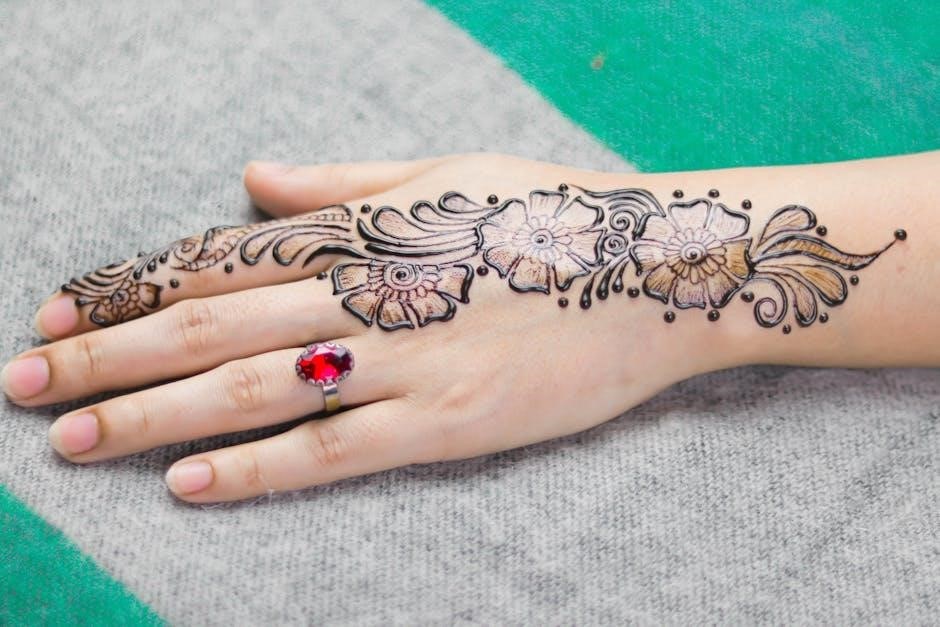
-
By:
- collin
- No comment
instructions for dylon hand dye
Dylon Hand Dye is a popular choice for transforming fabric colors, offering vibrant results for cotton, linen, and rayon. Easy to use, it requires dissolving the dye in water, adding salt, and submerging fabric. Always wear gloves and protective gear for safe application.
Overview of Dylon Hand Dye
Dylon Hand Dye is a well-known product for transforming fabric colors, suitable for cotton, linen, and rayon. Each sachet contains 50g of dye, designed for hand-dyeing processes. The dyeing process involves dissolving the dye in 500ml of warm water, then mixing with 250g of salt in 6 liters of water. Submerging the fabric and stirring ensures even color distribution. The product is user-friendly but requires careful preparation and safety measures, such as wearing gloves and protective eyewear. Dylon Hand Dye offers vibrant results, making it ideal for revitalizing old clothes or fabric projects. Always follow instructions to achieve the best outcomes and avoid common issues.
Importance of Following Instructions
Following the instructions for Dylon Hand Dye is crucial for achieving desired results and ensuring safety. Proper steps prevent uneven dye distribution and color fading. Weighing fabric, dissolving dye in 500ml of warm water, and mixing with 250g of salt in 6 liters of water are essential. Skipping steps may lead to poor color retention or fabric damage. Wearing protective gear like gloves and eyewear protects against skin and eye irritation. Deviating from guidelines can result in unsatisfactory outcomes, making adherence to instructions vital for both effectiveness and safety. This ensures a successful and safe dyeing experience every time.
Preparation for Dyeing
Weigh dry fabric, wash thoroughly, and leave damp. Dissolve dye in 500ml warm water wearing rubber gloves. Prepare a bowl or sink with 6 liters of warm water.
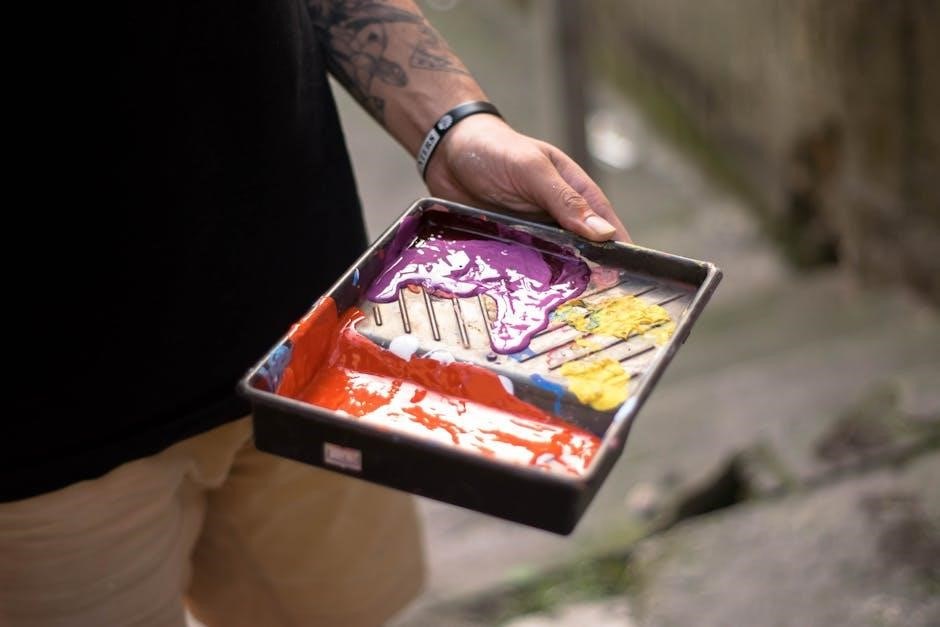
Materials Needed for the Process
To successfully dye fabric with Dylon Hand Dye, you will need a few essential materials. These include rubber gloves to protect your hands, a dye sachet containing 50g of dye, and 250g of salt to enhance color retention. You will also need a large container, such as a stainless steel sink or a bucket, to hold approximately 6 liters of warm water. Protective eyewear and clothing are recommended to avoid stains and potential skin or eye irritation. Ensure the fabric is clean, dry, and weighed beforehand. Having a spoon or stirrer handy will help mix the dye and salt evenly. These materials ensure a safe and effective dyeing experience.
Choosing the Right Fabric for Dyeing
Dylon Hand Dye works best on natural fabrics like cotton, linen, and rayon, which absorb the dye effectively. Synthetic fabrics such as nylon or polyester are not recommended as they may not retain the color well. Ensure the fabric is clean and dry before starting, as dirt or moisture can affect dye absorption. Avoid dyeing carpets, as Dylon warns against this due to potential uneven results. Always check the fabric care label to ensure compatibility with the dyeing process. Proper fabric selection is key to achieving vibrant, long-lasting colors with Dylon Hand Dye.

Understanding Fabric Weight and Measurement
Accurate fabric weight and measurement are crucial for successful dyeing. Dylon Hand Dye requires weighing dry fabric to ensure the correct dye-to-fabric ratio. The dye sachet (50g) is designed for a specific fabric amount, typically suitable for lightweight materials like cotton or linen. Overloading the dye bath with excess fabric can lead to uneven color distribution; Use a scale to measure fabric weight precisely, as may result in poor dye absorption. Proper measurement ensures vibrant, consistent results, making it essential to follow the instructions carefully for optimal outcomes with Dylon Hand Dye.
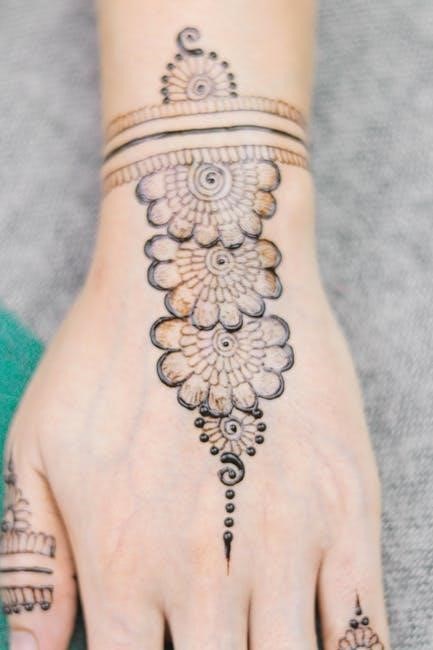
The Dyeing Process
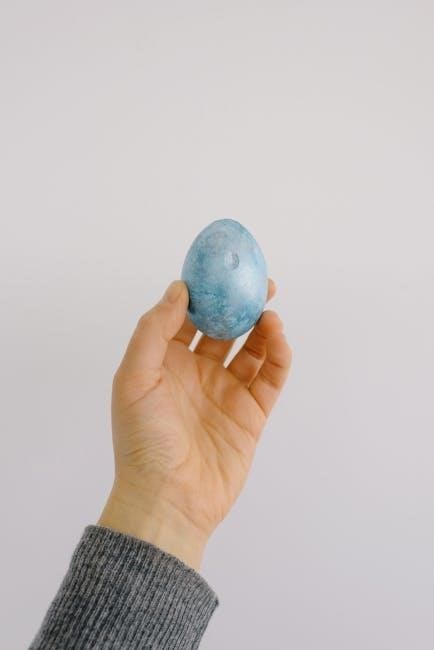
- Dissolve dye in 500ml warm water with gloves.
- Mix 250g salt into 6L of 40°C water.
- Submerge fabric, stir gently for 10 minutes.
- Stir regularly for 45 minutes, then rinse.
Dissolving the Dye
To begin, wear rubber gloves and dissolve one Dylon dye sachet in 500ml of warm water. Stir thoroughly until the dye is fully incorporated for even distribution. This step ensures vibrant color absorption. Always prioritize safety by wearing protective gear. Proper dissolution is key to achieving consistent results. Make sure no lumps remain before proceeding. This step sets the foundation for successful dyeing. Keep the mixture away from direct heat during preparation. Once dissolved, it’s ready to mix with salt and water for the dyeing process. Ensure all safety precautions are followed to avoid skin or eye irritation.
Mixing Dye with Salt and Water
After dissolving the dye, gradually add 250g of salt to 6 liters of warm water (approximately 40°C). Stir until the salt is fully dissolved to enhance color retention. Next, slowly pour the dye mixture into the saltwater, stirring continuously to ensure an even distribution. Use rubber gloves to protect your hands during this process. The salt helps the dye bind to the fabric, ensuring vibrant and long-lasting results. Maintain the water temperature and avoid overheating, as this can affect the dye’s effectiveness. Proper mixing is crucial for achieving consistent color. Once mixed, submerge the prepared fabric and proceed with stirring as instructed.
Submerging and Stirring the Fabric
Once the dye and saltwater mixture is ready, carefully submerge the prepared fabric, ensuring it is fully covered. Use rubber gloves to protect your hands and gently agitate the fabric for about 10-15 minutes to ensure even dye distribution. Continue stirring regularly for the next 45 minutes, maintaining the water temperature at around 40°C. Avoid letting the fabric settle to prevent uneven coloring. After the recommended time, remove the fabric from the dye bath and allow it to cool slightly before rinsing. Proper stirring and submerging techniques are essential for achieving vibrant, consistent results. This step requires patience and attention to detail.

Timing and Temperature
The optimal water temperature for dyeing is 40°C, with a recommended dyeing time of 45 minutes, including regular stirring for even color distribution and vibrant results.
Optimal Water Temperature for Dyeing
The ideal water temperature for Dylon Hand Dye is 40°C, as higher temperatures may cause color fading, while lower temperatures can reduce dye absorption. Ensure the water reaches a simmer before reducing heat. Dissolve the dye in 500ml of warm water first, then mix with 6 liters of 40°C water and 250g of salt. This temperature ensures vibrant color retention and proper binding of the dye to the fabric. Always test the water with a thermometer to maintain accuracy, as precise temperature control is crucial for achieving the desired results.
Recommended Dyeing Time
The recommended dyeing time for Dylon Hand Dye is approximately 45 minutes. After submerging the fabric, stir gently for 10 minutes, then continue stirring regularly for the remaining 35 minutes. This ensures even color distribution and proper dye absorption. Avoid overheating or boiling, as this can damage the fabric or cause uneven coloring. Once the dyeing process is complete, rinse the fabric thoroughly in cold water to remove excess dye. Consistent stirring and adhering to the time guidelines are essential for achieving vibrant, long-lasting results. Always wear gloves and protective gear during the process to avoid skin irritation. Proper timing ensures optimal color retention and fabric safety.
Rinsing and Washing
Rinse the dyed fabric thoroughly in cold water until the excess dye is removed. Wash separately in cold water with a mild detergent to prevent color bleeding.
Proper Rinsing Techniques
After dyeing, rinse the fabric gently in cold water until the excess dye runs clear. Avoid soaking the fabric to prevent color fading. Use a mild detergent if necessary, but ensure it’s free of bleach or harsh chemicals. Rinse thoroughly to remove any residual dye, as this helps prevent color bleeding in future washes. For delicate fabrics, consider rinsing under running water to minimize agitation. Proper rinsing ensures vibrant, long-lasting colors and prevents damage to the material. Always rinse in a well-ventilated area and wear gloves to protect your skin from any remaining dye residue.
Washing Instructions After Dyeing
After dyeing, wash the fabric gently in cold water to remove any excess dye residue. Turn the fabric inside out to protect the color during washing. Use a mild detergent free of bleach or harsh chemicals, as these can damage the fabric or fade the color. Avoid using fabric softeners, as they may reduce color vibrancy. For machine washing, select a gentle cycle with cold water and a short wash time. For hand washing, agitate the water gently and rinse thoroughly. Do not wring or twist the fabric excessively, as this can cause stretching or color loss. Allow the fabric to air dry naturally, away from direct sunlight, to preserve the dye’s intensity and fabric integrity.
Post-Dyeing Care
Allow the fabric to cool completely before handling. Dry naturally, away from direct sunlight, to maintain color vibrancy and prevent fading;
Allowing the Fabric to Cool
After dyeing, allow the fabric to cool gradually in the dye bath to ensure proper color fixation. Avoid rinsing while the fabric is hot, as this can disrupt the dye. Cooling helps the fabric retain the color evenly. Proper cooling prevents color bleeding or fading, ensuring long-lasting results. Always follow this step before moving to rinsing and washing to maintain the vibrancy of the dye.
Drying the Fabric
After rinsing, remove excess water without wringing the fabric to avoid distortion. Air-dry the fabric away from direct sunlight to prevent color fading. Do not expose it to heat, as this can damage the dye. Lay the fabric flat or hang it to dry naturally, ensuring even air circulation. Avoid using a dryer or iron during the drying process. Proper drying ensures the color remains vibrant and evenly distributed. This step is crucial for maintaining the integrity and appearance of the dyed fabric. Always follow these drying instructions to achieve the best results with Dylon Hand Dye.
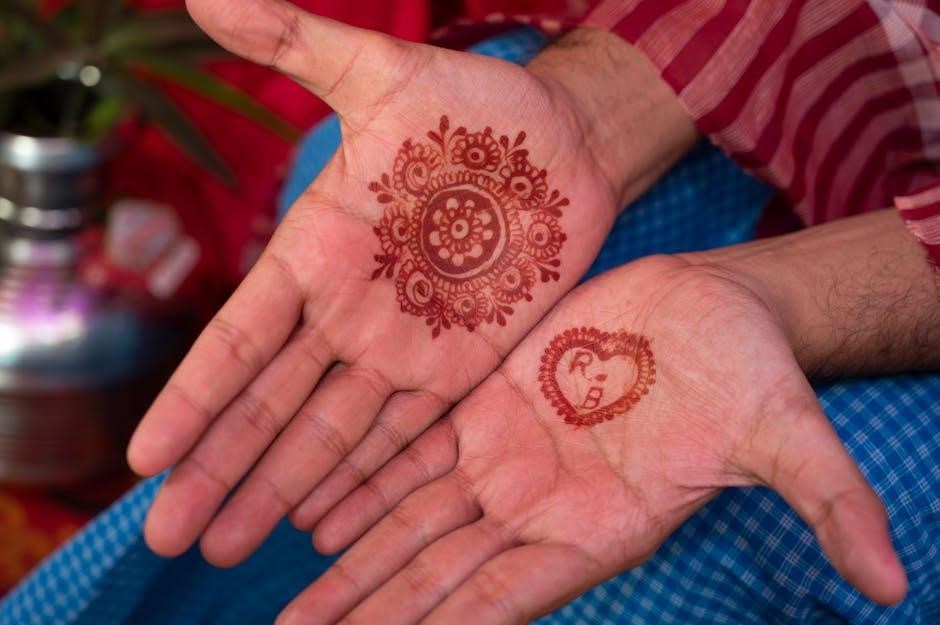
Tips for Achieving Vibrant Colors
For vibrant results, ensure fabric is clean and damp before dyeing. Use the recommended amount of dye and salt to enhance color retention. Stir thoroughly and consistently to distribute the dye evenly. Avoid over-saturating the fabric, as this can lead to uneven coloring. Maintain the optimal water temperature throughout the process to ensure the dye binds properly. Longer submersion times can deepen the color intensity. Always follow the instructions carefully to achieve the desired shade. Proper preparation and technique are key to vibrant, long-lasting colors with Dylon Hand Dye.
Using Salt for Better Color Retention
Adding salt to the dye bath is essential for achieving vibrant, long-lasting colors. Salt helps the dye particles bind more effectively to the fabric fibers, ensuring better color retention. According to Dylon instructions, 250g of salt should be added to 6 liters of warm water before introducing the dye. This step enhances the dye’s ability to penetrate evenly and deeply into the fabric. Stir the salt until it dissolves completely to maximize its effectiveness. Avoid using too much salt, as it can damage certain fabrics. Proper salt usage ensures the color remains rich and consistent, preventing fading after washing.
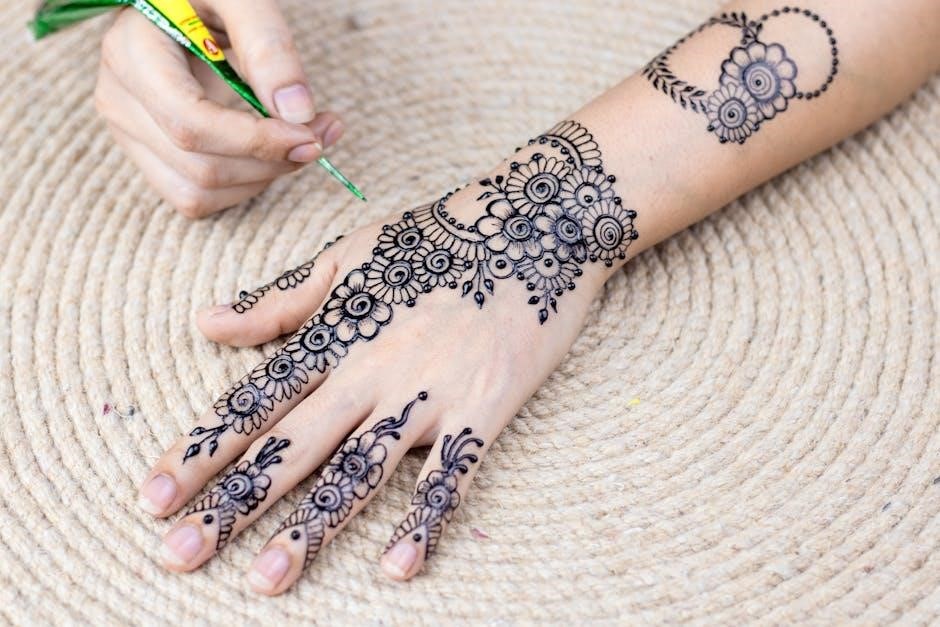
Stirring Techniques for Even Dye Distribution
Proper stirring is crucial for achieving an even dye distribution; Stir the dye bath gently but thoroughly, ensuring the fabric moves freely. Use a spoon or stirring stick to mix consistently, especially after adding the dye and salt. Stir for about 15 minutes initially, then continue stirring regularly for 45 minutes to maintain even color penetration. Avoid vigorous stirring, as it may damage delicate fabrics. Ensure the fabric remains fully submerged and moves naturally in the dye bath. This method ensures vibrant, consistent results and prevents uneven color patches. Regular stirring also helps prevent the dye from settling at the bottom of the container.
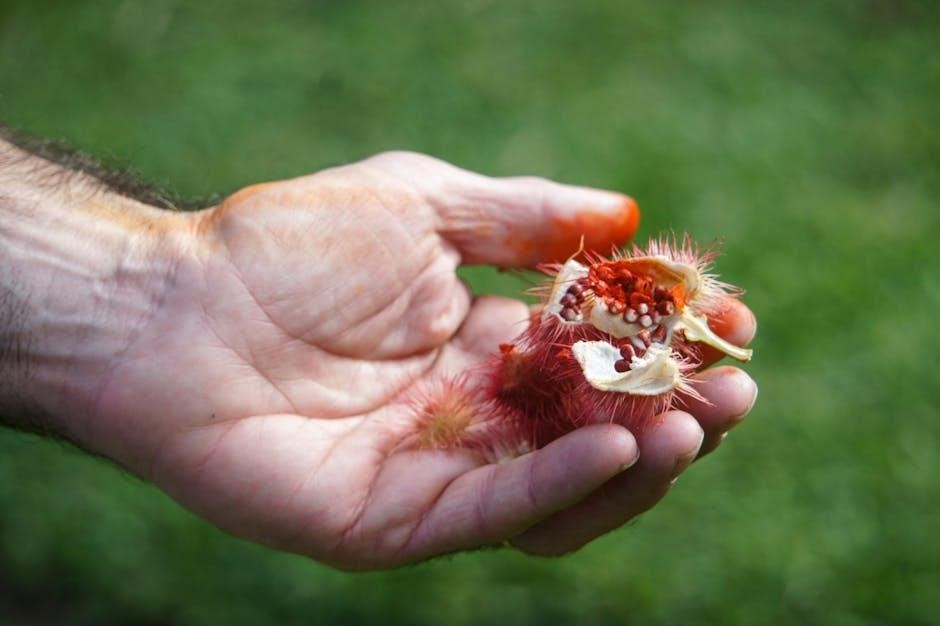
Safety Warnings
Always wear protective gloves and eyewear when using Dylon Hand Dye. The dye can cause serious eye irritation and skin discomfort if not handled properly.
Protective Gear and Gloves
Using Dylon Hand Dye requires wearing protective gloves to prevent skin irritation. Eyewear, such as goggles, is also recommended to protect against accidental splashes. The dye can cause serious eye irritation, so precautions are essential. Ensure all skin is covered with long sleeves and gloves to avoid direct contact. In case of spills, immediately rinse affected areas with clean water. Wearing protective gear minimizes risks and ensures a safe dyeing experience. Always handle the dye carefully, as improper use can lead to discomfort. Prioritize safety to enjoy optimal results without harm.
Eye and Skin Protection
Protecting your eyes and skin is crucial when using Dylon Hand Dye. Always wear rubber gloves to prevent skin irritation, and consider goggles to shield your eyes from splashes. The dye can cause serious eye irritation, so immediate rinsing with water is essential if contact occurs. Even with gloves, wash hands thoroughly after handling the dye. Avoid touching sensitive areas or rubbing your eyes during the process. In case of prolonged irritation, seek medical advice. These precautions ensure a safe and successful dyeing experience while minimizing potential risks to your health.
Dylon Hand Dye offers a straightforward way to refresh fabrics. By following instructions, including proper preparation, application, and safety measures, you can achieve vibrant, long-lasting results easily.
- Start by weighing and washing the fabric to ensure it’s clean and damp.
- Dissolve the Dylon dye sachet in 500ml of warm water while wearing rubber gloves.
- Add 250g of salt to 6 liters of warm water (around 40°C) in a bowl or stainless steel sink.
- Mix the dissolved dye into the saltwater solution and stir well.
- Submerge the fabric into the dye mixture, ensuring it’s fully covered.
- Gently stir the fabric for 10–15 minutes, then continue stirring occasionally for about 45 minutes.
- Rinse the fabric thoroughly with cold water until the excess dye is removed.
- Wash the dyed fabric separately in cold water before using it.
Always wear protective gloves and eyewear for safety.

Troubleshooting Common Issues
If the dye color appears uneven, ensure the fabric was submerged fully and stirred regularly during the process. For weak or faded results, check that the correct amount of dye and salt was used. If the fabric didn’t absorb the dye well, it may not have been damp enough before submerging. To avoid color bleeding, rinse thoroughly and wash dyed items separately. For stubborn stains or residue, rewash the fabric in cold water. Always follow the instructions carefully to achieve the best results and avoid common pitfalls. Proper preparation and attention to detail are key to successful dyeing.